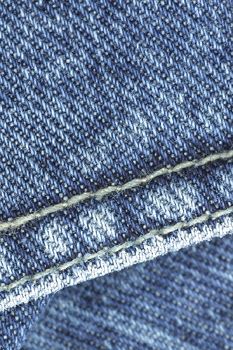Jan 20 2005
 If you're a middle-aged guy who's packed on the pounds and now is battling to take them off, it's a 50-50 shot that your jeans are fitting tighter because of your genes, according to a Saint Louis University School of Public Health study.
If you're a middle-aged guy who's packed on the pounds and now is battling to take them off, it's a 50-50 shot that your jeans are fitting tighter because of your genes, according to a Saint Louis University School of Public Health study.
"About 50 percent of adult onset weight change remains genetic," says James C. Romeis, Ph.D., professor of health services research at Saint Louis University School of Public Health and the principal investigator of the study, which was published in a recent issue of Twin Research.
Romeis studied sets of twins who served in the military during the Vietnam War –some identical (who share the same genes) and some fraternal (who share half their genes) – and found that genes account for more than 50 percent of the change in Body Mass Index. How we deal with our environment – what we eat, the amount we eat and how much we exercise – accounts for the other 50 percent.
It's tough enough for Joe Six Pack to take off weight. But for those whose genes predispose them to be heavy, weight loss is going to be difficult – really difficult – and take extra effort.
"We're not acknowledging the strength of genetic factors in our weight loss strategies," Romeis says. "You've got this genetic thing working against you that helps to explain why you're so heavy and why you may fail at diets and weight loss programs."
Romeis studied nearly 8,000 male twins at enlistment during the late 1960s, who now are married, well-educated, employed and middle-class. In early adulthood, more than 75 percent were of normal weight. Twenty years later, more than 55 percent were overweight or obese.
"Weight gain appears to increase gradually," Romeis says. "For these guys, it's at about 30 years old. Your behavior changes at 30; you become more sedentary. At some point they tip into being overweight. Those who are overweight tip into becoming obese. It's slow, incremental change. At the same time, we didn't see much evidence that they lost weight during the same time period."
Romeis speculates that our increasingly sedentary, "super-size-it" lifestyle is particularly problematic for those who are at genetic risk of becoming fat.
"While genetic vulnerability has probably not changed during the past few years, environments have, thus allowing for the genetic vulnerability to be expressed as what appears to be an alarming rate of increase."
Genetics helps to explain the difficulty these men have at maintaining a normal weight, but it doesn't excuse it, Romeis says.
"Losing weight is going to be a lot of work for these guys," he says. "Treatments and public health interventions need to recognize the magnitude of genetic factors if short-term and long-term interventions are to be effective."
But the battle of the bulge is worth waging, Romeis believes.
"If we're really serious about our collective waistline, we need to do a hell of a lot more than putting out a revised food pyramid," he says.
"The main thing is for heavy people to realize nothing good will come from being obese. The risk of heart disease and diabetes increases as person becomes increasingly overweight. 'Risk factors' seem to become a neutral term but they're not at all neutral. They can be a death sentence."